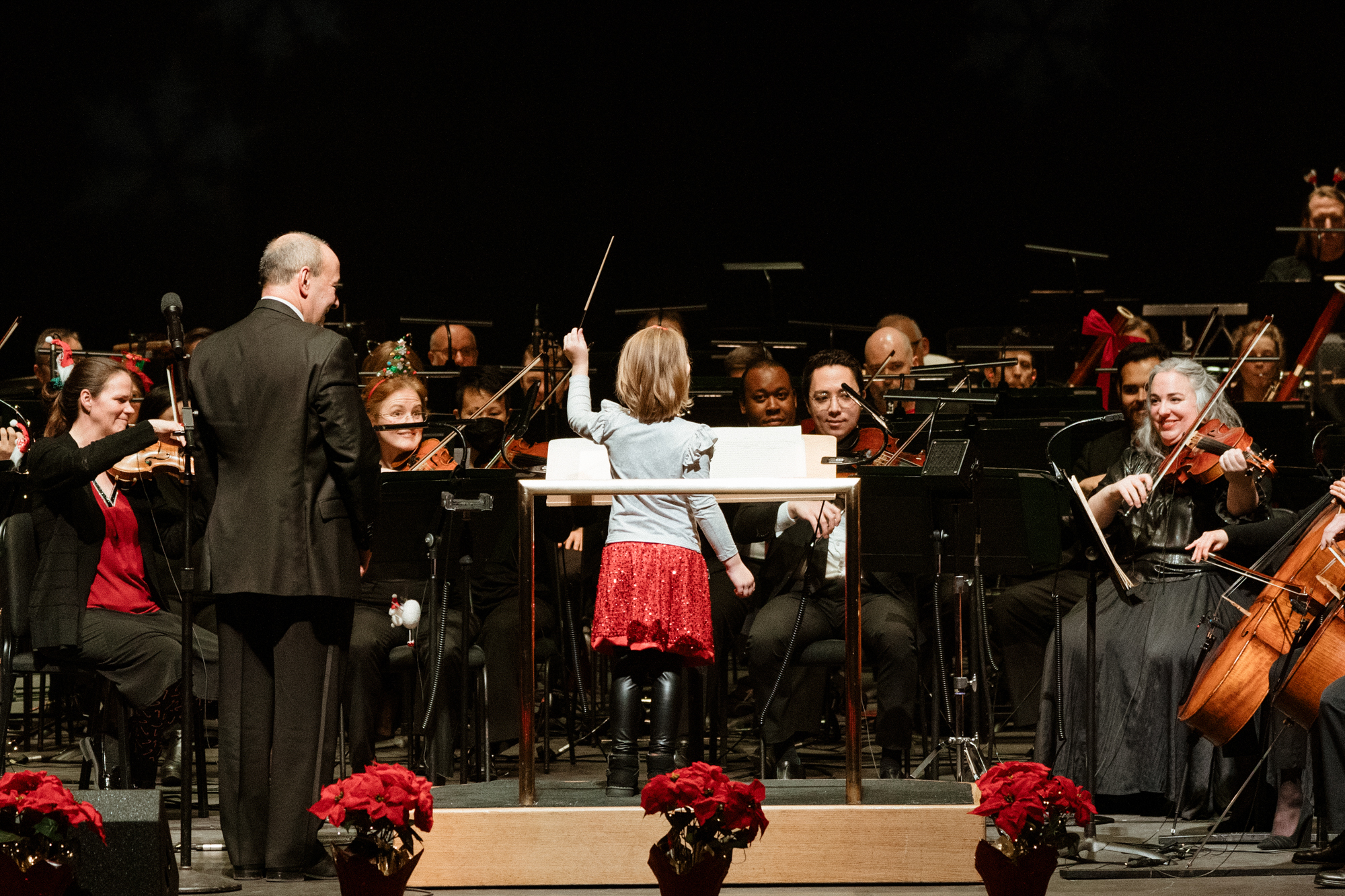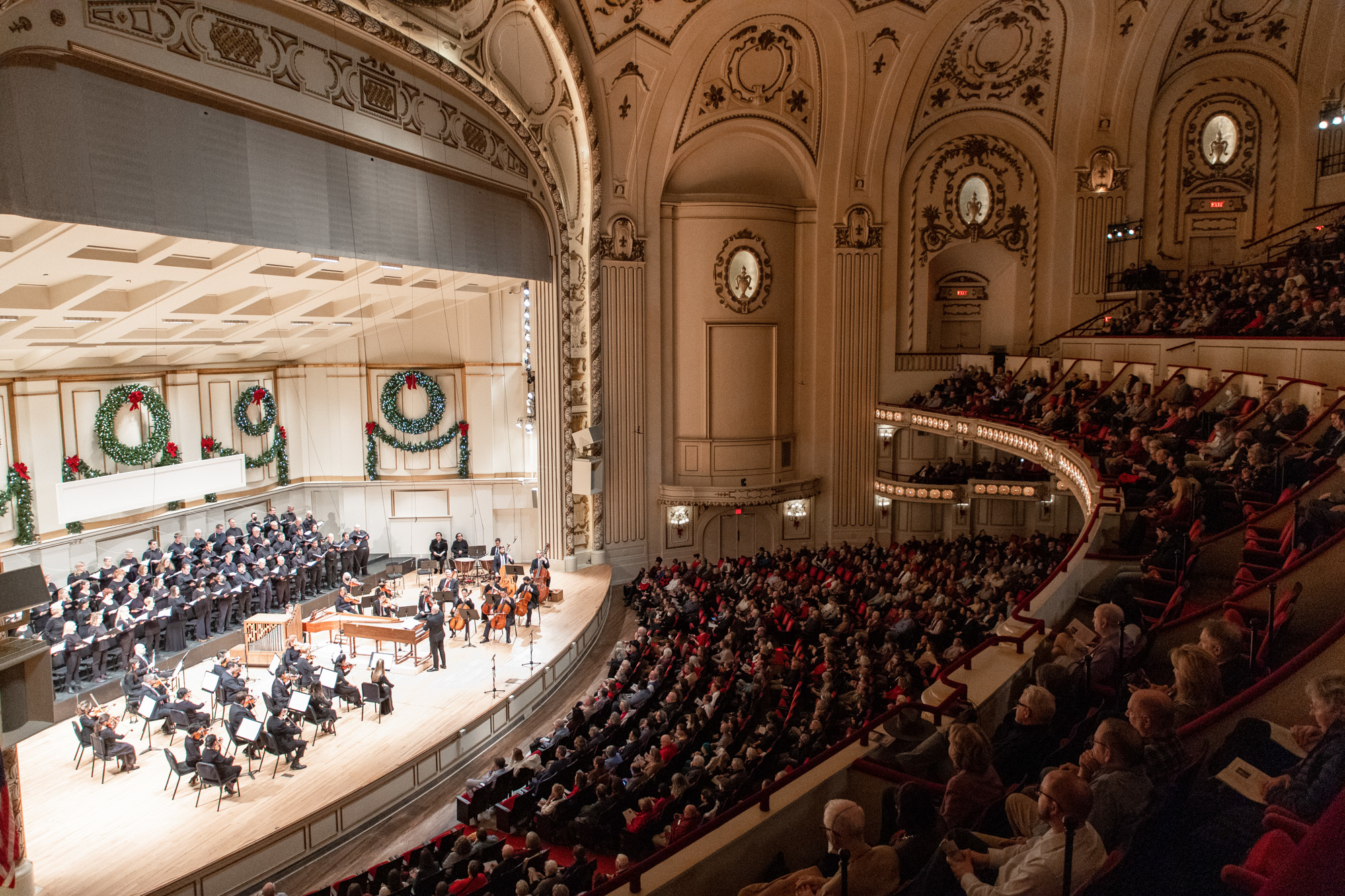Behind the scenes of the SLSO’s film concert series
By Iain Shaw
The St. Louis Symphony Orchestra’s film concert series is back for the 2025/26 season, with highlights including The Lion King (November 15–16), Home Alone (December 27–28), and The Wizard of Oz (January 30–February 1), Amadeus (February 13-14), and the Marvel Infinity Saga (May 1-3).
The key challenge of performing a film concert is ensuring that the music lines up with the movie, said SLSO Assistant Conductor Samuel Hollister.
“You can’t just conduct, you have to coordinate,” he says. There’s little to no room for error, and a missed cue can take the audience out of the action.
Hollister discussed the secrets behind making these popular film concerts a success as he prepared to conduct Hans Zimmer’s Academy Award-winning score for The Lion King.
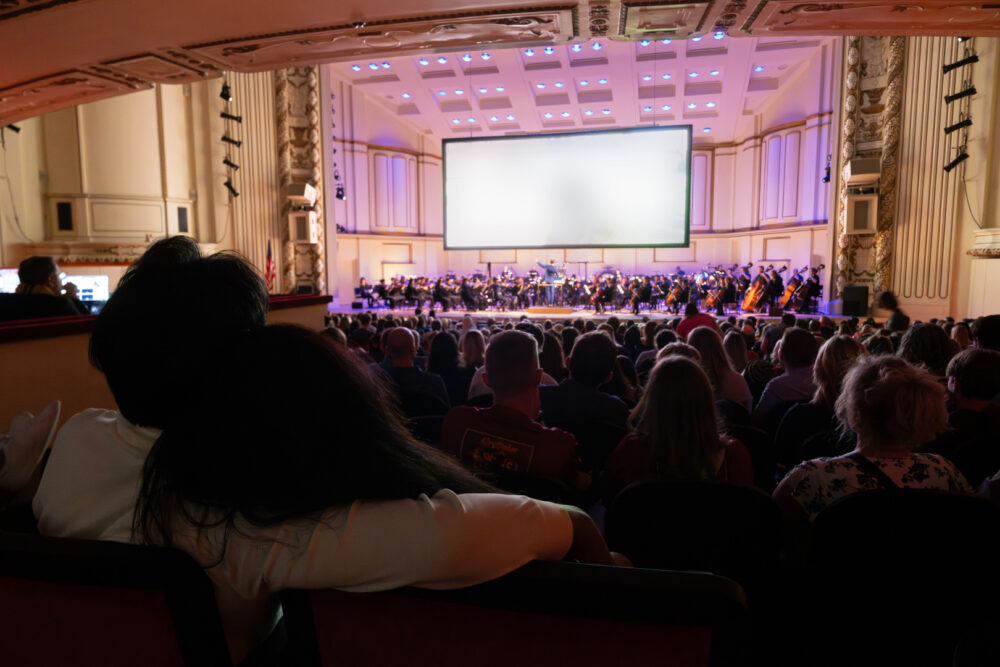
Tests of Musical Muscle
Hollister says that some scores are musically “insanely difficult.” He cites last season’s performance of How to Train Your Dragon as an “unflaggingly action-driven” score. “The brass are playing all the time, and it’s high, intense playing,” Hollister says.
Rehearsal time for movie concerts is often limited—with typically half the rehearsals compared to a classical symphonic program—so the orchestra and conductor have to figure things out quickly.
Performances like these not only test a musician’s skill, but also their endurance. Movie scores aren’t typically composed with live performance in mind, and they are often recorded across multiple studio sessions. Hollister notes that playing a brass or woodwind instrument high and loud for a long period of time is a genuinely challenging physical feat.
Upcoming SLSO film concerts
- The Lion King (Nov 15-16)
- Home Alone (Dec 27-28)
- The Wizard of Oz (Jan 30-Feb 1)
- Amadeus (Feb 13-14)
- Marvel Infinity Saga (May 1-3)
“You have to hold your face in a very athletic way and make that buzz,” he says.
This season’s Marvel Infinity Saga concerts (May 1–3), which feature the orchestra playing along with over 20 excerpted clips from Marvel Studios movies, will present the musicians with a similar workout.
There are also unique challenges for the conductor.
“The technical nature of your gesture needs to become so streamlined and so clear so that any slight adjustments are immediately palpable to the orchestra,” Hollister says.
A typical classical performance leaves room for some interplay between conductor and orchestra, but with movie concerts, the music has to keep pace with the film.
“There’s not as much give and take,” Hollister says. He admits that there can be opportunities to “come off the grid,” but the conductor has to prepare carefully for these moments—and must know when it’s time to return to the script.
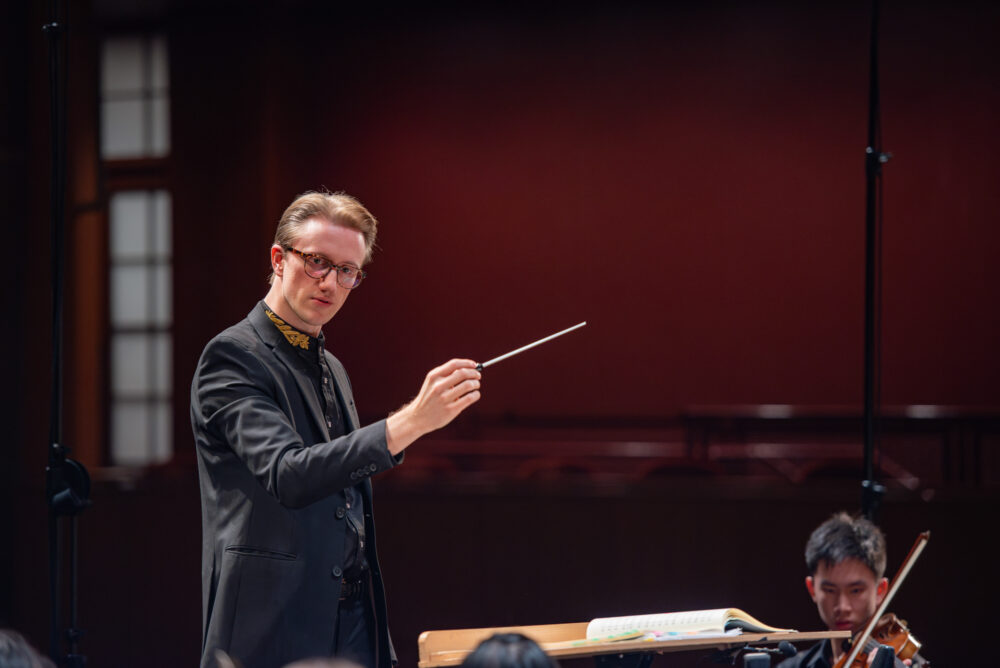
Tools of the Trade
Production companies provide orchestras with a number of tools that help the musicians and conductor ensure their performance is note-perfect. Even before the score reaches the orchestra, Hollister estimates the production company will have invested “hundreds, maybe thousands, of hours of labor” into producing the materials.
A small screen positioned just above the music stand allows the conductor to watch the movie while conducting. The conductor’s copy of the film contains several pieces of information that enable them to anticipate changes and keep time. A vertical line, or “streamer,” moves across the screen from right to left.
“When it hits the left side of the screen, that’s a moment of coordination with the score,” Hollister says. The streamer can be color-coded to signal different cues, such as when to start or stop playing.
“Punches,” which appear as flashes on the screen (the name is a holdover from the days when physical holes were punched in the film to achieve the same effect), provide another cue.
Beat numbers are displayed in the top-right corner of the screen, giving the conductor still more information to help keep time. Production companies may also provide a click track, a metronome-type beat that is typically delivered via headphones. Click tracks can help the conductor and musicians to follow the correct tempo and keep pace with the film.
Sometimes, the orchestra may be performing a score that was originally recorded separately, then later matched to certain cuts in the movie. E.T. The Extra Terrestrial, which the SLSO performed during the 24/25 season, is a notable example of this.
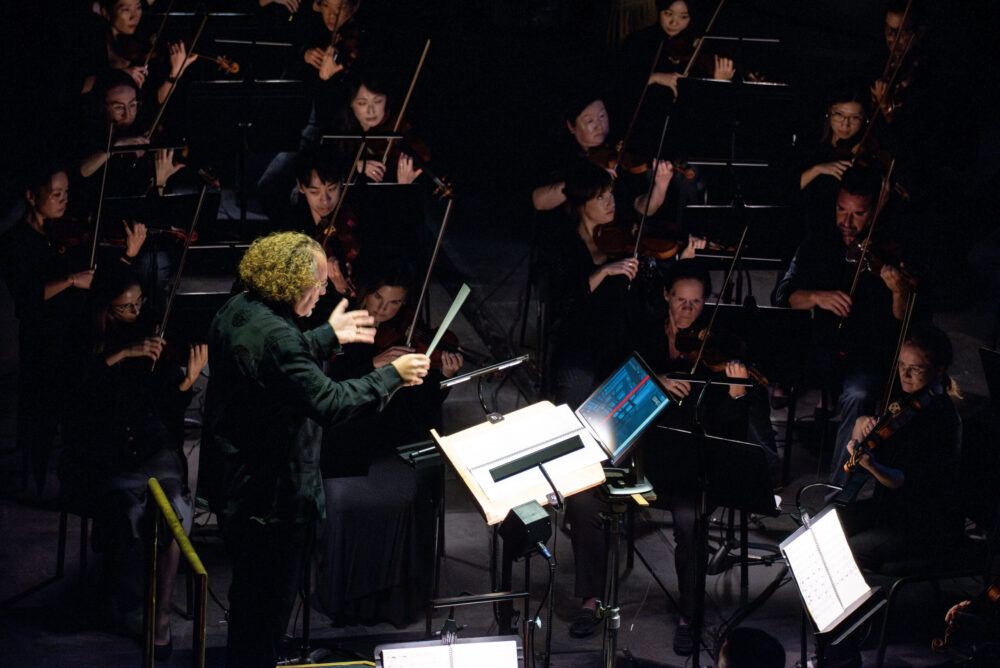
“[The Hollywood Studio Symphony] weren’t playing to a click track,” Hollister says. “Steven Spielberg said to John Williams to do the music first, organically. We then had to try and recreate something organic, and it’s very hard because the tempo might fluctuate just a little bit here and there.”
Streamers and punches play a vital supporting role in such situations.
Click tracks can guide the orchestra through a sudden change in tempo, or where instrumentation is being used that isn’t part of a typical orchestral configuration (a drum kit, for example). They are also useful when the orchestra is performing music that is supposed to be “heard” by the characters on the screen, as was the case during the SLSO’s 24/25 performance of Coco. “If we have a lot of diegetic music or vocals that we need to coordinate with, sometimes it’s nice to have a click track,” Hollister says.
Bringing It All Together
Unlike a typical classical concert, every instrument is amplified in some way for a movie concert. The SLSO’s Assistant Stage Manager (Sound), Ron Bolte, then balances the sound to ensure it remains optimal throughout the performance.
“It is a massively unwieldy beast,” Hollister says, but Bolte is “a wizard” at making adjustments in real time to maintain the right balance.
A lot of work goes into producing these unique concerts, and there are many steps to go through before the lights go down and the opening credits roll. For Hollister, the first phase of the entire process is also one of the perks of the job.
“I’ll watch the movie—a lot,” he laughs.
Iain Shaw is the SLSO’s Content Manager.
